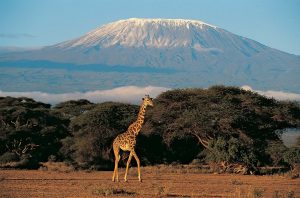Navigating Ngorongoro Crater: March Travel Tips
Ngorongoro Crater, located in Tanzania, is a must-visit destination for any wildlife enthusiast. The crater is a UNESCO World Heritage Site and is home to a diverse range of animals, making it a popular choice for safari tours. If you are planning a visit to Ngorongoro Crater in March, there are a few things you should know to make the most of your experience.
Weather and Climate
March falls within the wet season in Tanzania, which means that visitors to Ngorongoro Crater can expect some rainfall during their visit. While the rain can make for lush landscapes and beautiful scenery, it is important to be prepared for the possibility of wet weather. Packing a raincoat or poncho, as well as waterproof shoes, is recommended to stay dry and comfortable during your safari.
Wildlife Viewing
Despite the rainy season, March is still a great time to visit Ngorongoro Crater for wildlife viewing. The rain brings new life to the region, with an abundance of greenery attracting a variety of animals. The crater is home to the Big Five – lions, elephants, buffalo, leopards, and rhinos – as well as a wide range of other species. Visitors can expect to see plenty of wildlife during their safari, so be sure to bring binoculars and a camera to capture the experience.
Accommodation and Tours
For a seamless and memorable experience at Ngorongoro Crater in March, it is recommended to book a safari tour with a reputable company. Sunset Africa Safari offers guided tours of the crater, providing visitors with the opportunity to see the best of the wildlife and landscapes in the area. To book a tour with Sunset Africa Safari, interested clients can contact info@sunsetafricasafari.com for more information.
Essential Information for Visiting in March
Conservation Fees
Visitors to Ngorongoro Crater are required to pay a conservation fee upon entry. The fee helps support wildlife conservation efforts in the area and ensures the preservation of the ecosystem. It is important to be prepared with cash to pay the fee upon arrival at the crater, as credit cards may not be accepted.
Vehicle Restrictions
To protect the environment and wildlife in Ngorongoro Crater, there are specific rules and regulations for safari vehicles. Only certified tour operators are allowed to conduct safaris within the crater, and off-roading is strictly prohibited. Visitors should adhere to these regulations to ensure the sustainability of the ecosystem and the safety of the animals.
Cultural Considerations
In addition to the wildlife, Ngorongoro Crater is also home to the Maasai people, who have lived in the area for centuries. Visitors should respect the local culture and traditions, including dressing modestly and asking for permission before taking photographs of the Maasai people. Engaging with the local community can enhance your experience and provide insight into the rich cultural heritage of the region.
Overall, visiting Ngorongoro Crater in March can be a rewarding and unforgettable experience for nature lovers and adventure seekers. By following these travel tips and essential information, you can make the most of your safari and create lasting memories in this stunning natural wonder.


